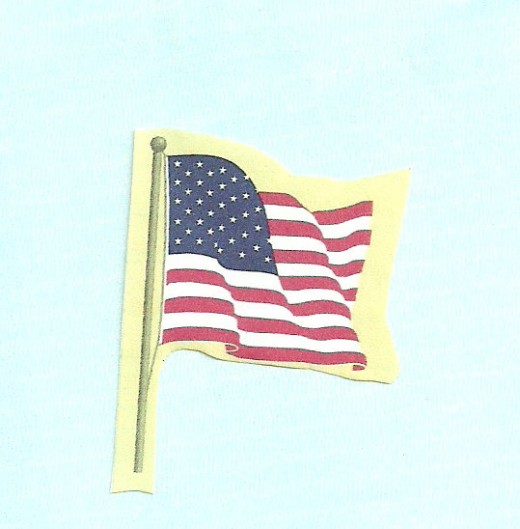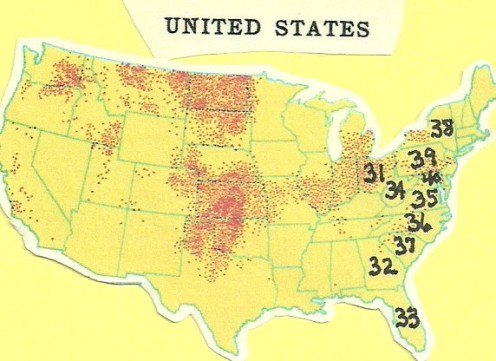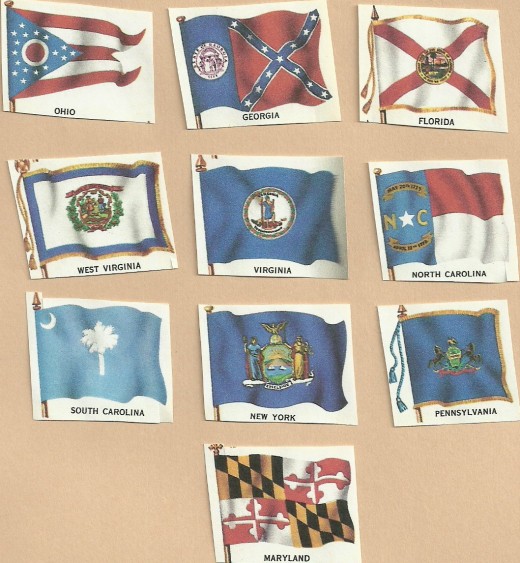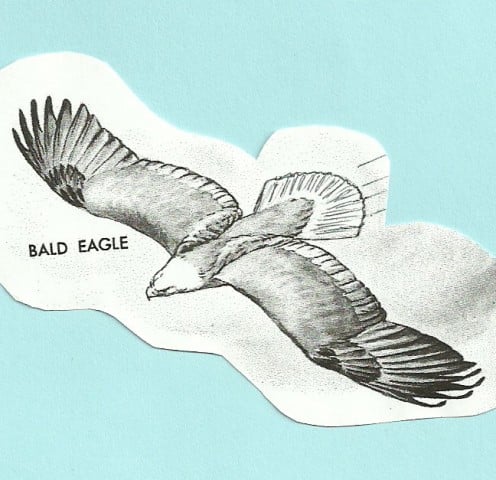Ten States Fight to Gain Statehood in the United States

This series on the states of the United States began with "What's Special About These United States -- One Through Ten?" It continued with "Ten States, Flag Flying, Statehood and Land Mass in the United States".
Some to-be-future states of the United States fought territorial disputes, others battled foreign militaries, some fought wars with the native Indian tribes to gain control of the land, and many fought among themselves, before statehood was settled.
Ohio Enters Union
Members of the original Ohio territory claimed by the French in 1673 essentially fought off the Indian residents of the region to become part of the United States.
The Ohio territory gained statehood in 1803. The region had been incorporated into the Northwest Territory in 1787. In 1763, the French had ceded their hold on the area to Great Britain.
By 1794, the conflict between the Ohio country's native Indians and its first settlers climaxed in a great battle at Fallen Timbers. This area is marked today with a memorial located a short distance from Toledo, Ohio's, western edge between the freeway and the Maumee River.
General "Mad Anthony" Wayne gained his war glory in this famous battle, crushing the Indian warriors, and forcing them to cede their land to the American government in the Treaty of Greenville.
Ohio statehood was proclaimed in Chillicothe, the eastern capital of the Ohio territory, on March 1, 1803, when Ohio's first official legislature convened.

The ten states on the United States map above and their position of statehood among America's 50 states are:
No.31 - Ohio; 17th state admitted to the United States
No.32 - Georgia; fourth
No.33 - Florida; 27th
No.34 - West Virginia; 35th
No.35 - Virginia; 10th
No.36 - North Carolina; 12th
No.37 - South Carolina; eighth
No.38 - New York; 11th
No.39 - Pennsylvania; second
No.40 - Maryland; seventh
Georgians Gain Statehood
Georgians were the fourth land claimers to ratify the federal Constitution of the United States, and their statehood was assured in 1788. However, trouble lurked on the horizon with the Cherokee Indian tribe and with the election of Abraham Lincoln as President of the United States.
From the Chattahoochee River on its western border to the Mississippi River, Georgia's lands were sold to the federal government. This occurred in 1802.
The Cherokee nation had developed its own alphabet, taught its members to read and write, and had translated parts of the Bible, as well as briefly published its own newspaper, the Cherokee Phoenix. The Indian tribe's constitution and government helped support its schools and churches.
But Cherokee Nation was not recognized as its own entity by the United States government. After bitter military conflicts, the Cherokees were forced by the federal legislature to reestablish their lives under federal control on designated reservations west of the Mississippi River.
To complicate matters of statehood, Georgians voted to secede from the Union when Lincoln was elected. As Southerners, they fought against the northern states in the Civil War. The land of Georgia was destroyed by Lincoln's General William T. Sherman in a massive march of devastation straight to the Gulf of Mexico that borders the state's southern most portion.
Still in a recovery period from the Civil War, Georgia was readmitted to the Union in 1870.

North Versus South
Ohio and Georgia represented the flourishing industrial north and the southern mansions among cotton fields, respectively, through which the Civil War was fought in the eastern part of the United States. Although there was some conflict as far southwest as Texas, most of the Civil War's story of north battling south developed in the eastern half of America.
New York and Florida
In New York, with little conflict, state members adopted their first constitution in 1777. Statehood was accepted in 1788.
In Florida, a different story unfolded when statehood was granted in 1845. The Seminole Indians were forced out of the state boundaries after seven years (1835-1842) of conflict and battles. Like the Cherokees, the Seminoles were moved to territories in the western United States.
And like Georgia, Florida seceded from the Union to join the southern interests in the Civil War. After the South's defeat, Florida rejoined the Union in 1868.
Pennsylvania and the Carolinas
The most historic state of the United States in terms of the present Constitution and American troops winning the Revolutionary War, which made independence from England possible, is Pennsylvania. This state is the cradle of independence. It was in Pennsylvania's Carpenters' Hall in Philadelphia that the first Continental Congress met. Their legacy became the adoption of the Declaration of Independence in Independence Hall. America claimed itself free from the colonial hold of England.
Pennsylvania's own statehood came in 1787.
In the Civil War between North and South, the battle of Gettyburg in Pennsylvania in 1863 helped turned the tide of war against the South's secession.
It was in South Carolina, at Fort Sumter in the bay across from Charleston, that the first volleys of Civil War were exchanged. South Carolina had already seceded from the Union in 1860, after adopting statehood in 1788.
South Carolina troops fired on the northern Yankees holding Fort Sumter, and four years of bitter fighting (1861-1865) ensued between North and South.
When it was over, South Carolina didn't reenter the Union until 1868.
North Carolina fought a battle similar to its sister state, entering the Union as a state in 1789, seceding after the fall of Fort Sumter in 1861, and adopting statehood once again in 1868. The greatest of the last battles of the Civil War took place in Durham, North Carolina, where southern General Joseph E. Johnston surrended to General Sherman.
North Carolina locals say they signed the first colonial Declaration of Independence, called the Mecklenburg Declaration of Independence, on May 20, 1775, the date that appears on their state flag and seal.
The Virginias and Maryland
The northwestern counties of Virginia strongly opposed secession from the United States, but were overwhelmed. A separation of lands was wrested into completion in 1861. Virginia alone formed a "restored" government, breaking away from the quarreling northwestern portion of its territory.
West Virginia rose from that separation and was granted statehood in 1863.
Virginia plodded on, and the Richmond area hosted several battles that represented some of the Civil War's most bloody, including Bull Run, an early victory for the South. The war ended at Appomattox, Virginia, when General Robert E. Lee surrended his southern forces of the Confederacy to General Ulysses S. Grant, commander of the Union Army.
The bitter Reconstruction Period followed, and Virginia rejoined the United States.
In 1788, Maryland became an official part of the United States and within three years it gave 60 square miles to the federal government to form the District of Columbia, or the federal capital district, Washington D.C.
Bitter fighting took place at Maryland's Antitam Creek, near Sharpsburg, Maryland, during the Civil War, and state members experienced angry calls to battle for both North and South armies.
Maryland, however, held firm its statehood and, in 1864, ratified a new constitution that abolished slavery.
Statehood Forever
Although the Civil War delayed the statehood efforts of a number of southern states in America, in the end statehood was declared the best idea to promote progress in the USA territories.
By 1959, the land of America had become its current fifty United States.

- What's Special About These United States -- One Through Ten?
What are some special facts that make the states of the United States each a unique part of the whole of America? For instance, where was the nation's first sawmill put into service?
- Ten States, Flag Flying, Statehood and Land Mass in the United States
The United States of America have varied land masses, from small to medium to gigantic, in comparison to each other. How does the USA's total square miles divide out in the middle states' land acreage?








